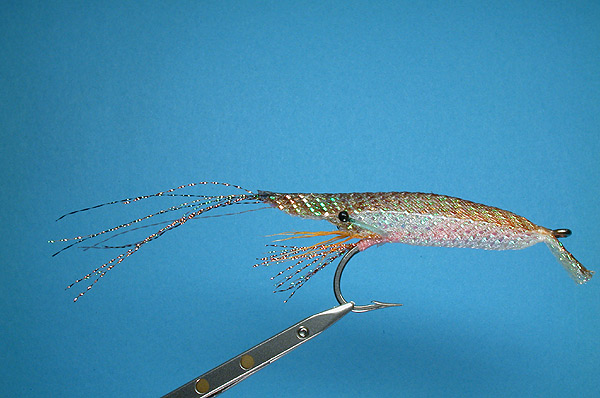Floating Prawn

This is by far the top producing barramundi fly in the Hinchinbrook Passage area. A young guide named Rob Laspina developed it. The barras cruise along the edge of the mangroves on a falling tide and ambush prawns. The prawns will literally fly out of the water to escape the 'mundis. Coating the body with Softex or Flexament traps air inside. The stiffended tail acts as a diving lip. You fish this fly using a couple quick strips to cause the fly to dive and then let it float back to the surface. The barra strikes come as a complete surprise in the murky water. The fly also took flathead, trevally, threadfin salmon, mangrove jacks, and queensfish. The fly is nearly snag-free because the tail causes it to flip over the mangrove roots.